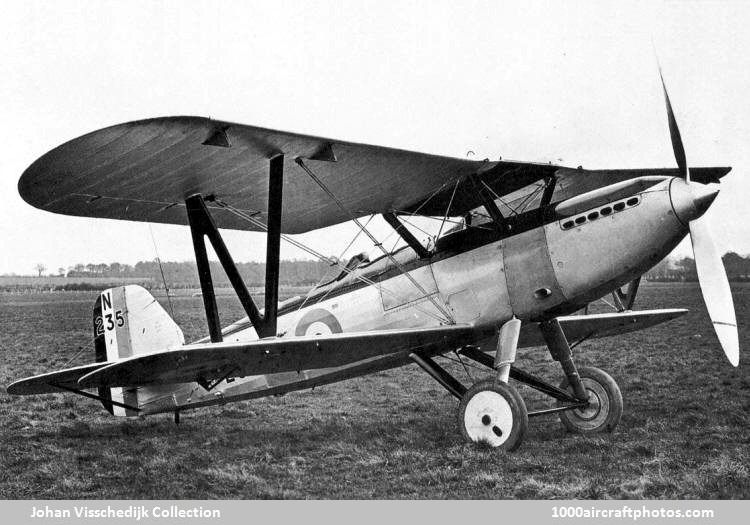05/15/2020. Remarks by Johan Visschedijk: "In 1926 the FAA had seen the need for a two-seat spotter-reconnaissance aircraft which would also be able to operate to a limited extent as an interceptor fighter. To meet the resultant specification O.22/26 of November 1926, Marcel J.O. Lobelle, Fairey's Chief Designer from 1925 to 1940, designed a typically clean and handsome aircraft somewhat reminiscent of the Fox day bomber, but following the structural design of the Fox IIM which, as its designation implies, was of all-metal construction with steel-tube fuselage and built-up steel-strip wing spars. Powered initially with a Rolls-Royce F.XI Kestrel I and later with a moderately supercharged Kestrel IIMS, the one and only Fleetwing was completed in 1929 and was flown for the first time by Chief Test Pilot Norman Macmillan on May 16 from Northolt.
In its initial form shown above, the Fleetwing was fitted with wooden wings and completed preliminary trials at Martlesham, as well as deck trials with HMS Furious in June 1929, before being returned to the makers for the fitting of metal wings and other modifications including increased fin area and a horn balance for the rudder. After factory tests in September, N235 returned to Martlesham for final Service trials in October 1929.
The requirements called for a landplane designed for carrier operations and a floatplane which was stressed for catapulting. Armament consisted of a single Vickers gun in a blast trough on the port side of the engine cowling for the pilot, a Lewis gun on a Fairey high-speed mounting for the observer/ gunner and provision for four 20 lb (9 kg) bombs in racks under the port wing.
Also competing to meet the requirement were Blackburn (2F.1 Nautulus), Short Brothers (S.10 Gurnard) and Hawker (navalized Hart prototype), which was finally met by the much-modified version of the Hart, and this aircraft went into production as the Osprey under specification O.19/30. Of the four contenders, the Fleetwing was evidently the runner-up, the two aircraft, in their floatplane versions, were evaluated more or less side-by-side by the MAEE, Felixstowe, in May/June 1930.
The Osprey was considered by the MAEE test pilots to be superior because of its better maneuverability in the air, its easier maintenance and its resistance to corrosion and the entry of sea-water. On this 'waterproofness' the design of the cowlings of Hawker's navalized Hart was described in the test report as being 'superior to that of any seaplane previously tested'. Nevertheless, the Fleetwing was also given high praise for its behaviors and tight turning circles on the water, and, in the air, for its pleasant handling and light ailerons - though it lost heavily on the counts of corrosion and rusted steel fittings.
Earlier, the Fleetwing had been on trial, alongside the navalized Hart prototype and the Blackburn Nautilus, with No. 405 Flight aboard HMS Furious from January 21 to March 29, 1930. Two years later, in April 1932, the Fleetwing, then again fitted with floats, was embarked on HMS Norfolk for catapult and associated trials, returning to Portsmouth on July 29. A total of 29 flights were made, all but three after catapult launch. The last, five-minute, flight, on 18 July, ended in a forced landing in heavy seas. The float landing gear was wrecked and the Fleetwing was further damaged during salvage operations, so that it was later returned to Lee-on-Solent as a write-off.
During the three years of its existence N235 had served a useful purpose if only as a pace-maker. Among its many duties was that of a hack, alongside the Firefly III, for seaplane practice and weather/sea-state tests with the winning Schneider Trophy team in September 1931.
